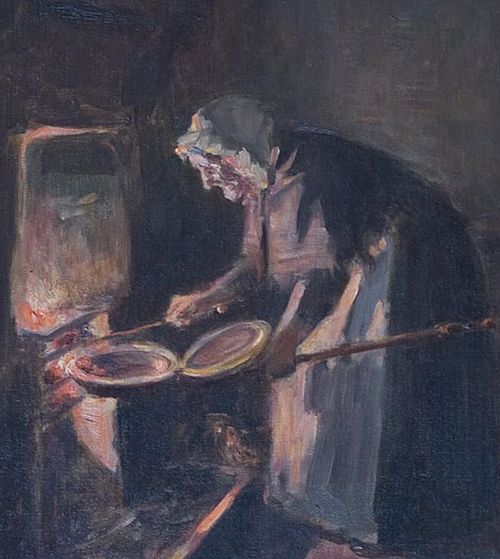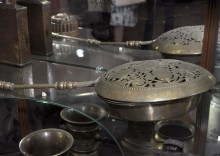They are rubberized and electrical, children’s and adults’. What else can be said about hot-water bottles? Very much, as it turned out. First of all, humankind used them, unbelievably, well before Christian era (!).
But we will discuss it a bit latter. And now – about the antique bed warmer now on display at the Museum of Ethnography and Art Handicrafts of Ukraine (15, Svobody Avenue).
As Andrii Kolotai, head of the museum’s exhibition sector, told The Day, it is above all children who react cheerily to the copper heating pad with which chambermaids used to warm rich people’s beds. Why? Because they saw an exactly similar heater and the very process of bed-warming in the film Pirates of the Caribbean: the Curse of the Black Pearl.
As a matter of fact, heaters like this, with a long handle, were widely used in cool-winter countries. “In England, for example, this thing was a very common household item,” the museum man says.
The heater consists of a copper container and a handle. It looks like a large and deep frying pan with a lid. This gorgeously decorated lid was finely perforated for air circulation.

Photo from the website RODON.ORG
The container was filed with hot coals from the oven or the fireplace and put under the blanket in order to warm up a cold or moist bed before sleeping.
The Museum of Ethnography and Art Handicrafts has inherited this item from its predecessor – Lviv’s Art and Crafts Museum founded in 1874.
And now about “adult impressions” of this heater.
When I was interviewing Kolotai, museum visitors would come up to us and ask what it was all about. Some called the bed warmer a “little basin,” some thought it was the pendulum of a big clock because it had such a long handle. And somebody even presumed (half-jokingly or perhaps seriously?) that this frying pan was very good to fry potatoes on… Note that nobody said “heater” or “hot-water bottle.”
As for me, to know better the history of this very useful object, I ran over various sources and found very much interesting and, what is more, new (for me) information. It turns out that the infirm used hot-water bottles back in the times of Hippocrates of Kos (c. 460 BC-370 BC), a physician in Golden-Age Athens.
In ancient times, various containers (leather bags, bull’s bladders, clay or copper vessels) filled with hot water or loose matter, such as cereals, salt, ashes, and sand, were used as hot-water bottles. Also in use were such things as stones, bricks, or irons to warm up a bed or a room – after being heated, these could keep a high temperature for a long time. Flaxseed or flour shortcakes were also widely used for heating purposes. “The price of the question” was the contents of the wallet.
Ancient bed warmers, like the one displayed in the abovementioned museum, were also made from brass or even silver. Handles were metallic or wooden – always with a hook in order to hang warmers on the wall. Bed warmers were typically kept near the fireplace from which the “fuel,” i.e. coals or hot ashes, was taken.
A long handle was also needed for carrying the warmer from the oven to the bed and moving it under the mattress.
Historians note that such “hot-water bottles” were even transferred by bequest.
With all the aforesaid in view, I even tried to find the traces of this rarity in paintings. After a long search, I found some in genre canvases by Englishman Ralph Hedley and Dutchman Jan Steen.
So please visit museums and, naturally, read the newspaper Den/The Day – we have things that will arouse your interest.







